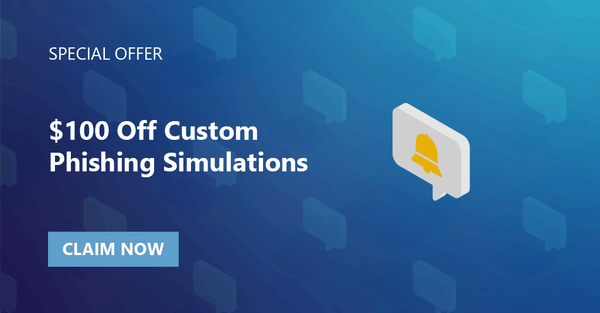Cybercriminals have continued to evolve the ways they exploit users - rendering modern threats immune to traditional security measures. Email compromises are more personalized, while malicious attachments and spoofed domains are more convincing. These cyber kill chains are nuanced, and potentially devastating for targets. That's why it's so important to have top-tier, layered security protocols.
Here's What You Need to Know About Protecting Your Business from a Cyber Kill Chain:
What is a Cyber Kill Chain?
Simply put, a cyber kill chain is the course of action a cybercriminal will take to attack their victim. These kill chains typically feature a core structure (see below), with variations based on attack type and personal style. At the core, these structures typically include the following phases:
-
Breaking In
- This step often goes unnoticed, as cybercriminals remain intentionally covert to avoid creating red flags. There may be no immediate damage. While there are many ways to break in to an employee's system, email is a common point of entry, as malicious attachments can spread malware throughout an entire system. This was the case in the Maersk NotPetya malware attack of 2018, where malware spread across the company network and ended up costing the shipping conglomerate $300 million.
-
Investigating Your Systems
- Once a hacker gets into your system, they will begin to familiarize themselves with your machine, specialized tools, and identify areas that are either valuable or vulnerable. Once again, this reconnaissance is subtle by design, and often goes unnoticed. In fact, a recent report from IBM found that the average breach goes unnoticed for 212 days. However, depending on the attack type, the entire cyber kill chain may be executed over the course of a few days or hours.
- Once a hacker gets into your system, they will begin to familiarize themselves with your machine, specialized tools, and identify areas that are either valuable or vulnerable. Once again, this reconnaissance is subtle by design, and often goes unnoticed. In fact, a recent report from IBM found that the average breach goes unnoticed for 212 days. However, depending on the attack type, the entire cyber kill chain may be executed over the course of a few days or hours.
- Executing an Attack
-
- After your system has been breached and studied, a hacker will finally execute their attack. This can take the form of ransomware - spreading rapidly throughout your system and encrypting important files. Other important files and materials can be exported and sold without hesitation on the dark web.
- After your system has been breached and studied, a hacker will finally execute their attack. This can take the form of ransomware - spreading rapidly throughout your system and encrypting important files. Other important files and materials can be exported and sold without hesitation on the dark web.
It is important to remember that the cyber kill chain is a highly customized, sequential structure. These kill chains can vary depending on attack type, target resource (cloud versus on-premise), device type (in-office versus remote), and more. For example, a hacker could use a malicious email to access a user's private information at first. They could wait some time and then try and reset all of the victim's accounts all at once. A hacker can do a lot of damage in a short period of time. On a grander scale, hackers can also coordinate an attack on a large organization and request funds to be transferred overseas via a business email compromise scam. It all depends on the hacker and their style.
How to Protect Your Business from Cybercriminals
Two of the most common threats your business will likely face are business email compromise and ransomware. With a BEC attack, cybercriminals harvest accounts and credentials from your executive/management team, impersonate them, and persuade employees/clients to release valuable information. This can range from employee PII to wire transfers. Ransomware also often starts with email, and has become one of the most common means of extracting money from SMBs. In order to combat threats like these, you need to have a layered security approach that accounts for unique attack types and kill chains. Here are some examples of layered solutions:
- Security Monitoring
- A solution such as SOC-as-a-Service combines cutting-edge Security Information and Event Management technology and established threat intelligence to track privilege elevation, data leaks and breaches, suspicious network activity, user identity and account lockouts, and real-time endpoint monitoring. Endpoint protection provides a critical safety net after an employee engages with malicious content, but before that content has a chance to spread across your network. This gives your IT team time to identify and eliminate threats, as well as take precautions on other machines.
- A solution such as SOC-as-a-Service combines cutting-edge Security Information and Event Management technology and established threat intelligence to track privilege elevation, data leaks and breaches, suspicious network activity, user identity and account lockouts, and real-time endpoint monitoring. Endpoint protection provides a critical safety net after an employee engages with malicious content, but before that content has a chance to spread across your network. This gives your IT team time to identify and eliminate threats, as well as take precautions on other machines.
- Firewalls
- Modern firewalls allow your IT team to set strict parameters around inbound and outbound mail. They can establish rules for attachments, links, automatic forwarding, and geofencing - while incorporating tools such as single-sign-on and multi-factor authentication for an additional layer of behavioral analysis.
- Modern firewalls allow your IT team to set strict parameters around inbound and outbound mail. They can establish rules for attachments, links, automatic forwarding, and geofencing - while incorporating tools such as single-sign-on and multi-factor authentication for an additional layer of behavioral analysis.
- Endpoint Protection
- Endpoint protection uses behavioral patterns to identify suspicious user actions. Programs such as Microsoft InTune provide a single dashboard, through which your IT team can monitor and respond to threats. With InTune, they can view enrolled endpoint devices and accessed resources, ensure compliance with organizational standards, access reports on (non)compliant users and devices, remotely wipe data from lost, stolen, or retired devices, and push certificates for easy access to WiFi or network VPNs.
At iCorps, we offer a variety of security solutions to help protect your business from cyber hackers. To learn more or to schedule a free IT consultation, visit us here.






![[BLOG] Top 6 Ransomware Attacks of 2021| 3 Ways to Protect Your Business](https://blog.icorps.com/hs-fs/hubfs/READY%20TO%20USE%20-%20Blog%20Image%2049.png?width=352&name=READY%20TO%20USE%20-%20Blog%20Image%2049.png)